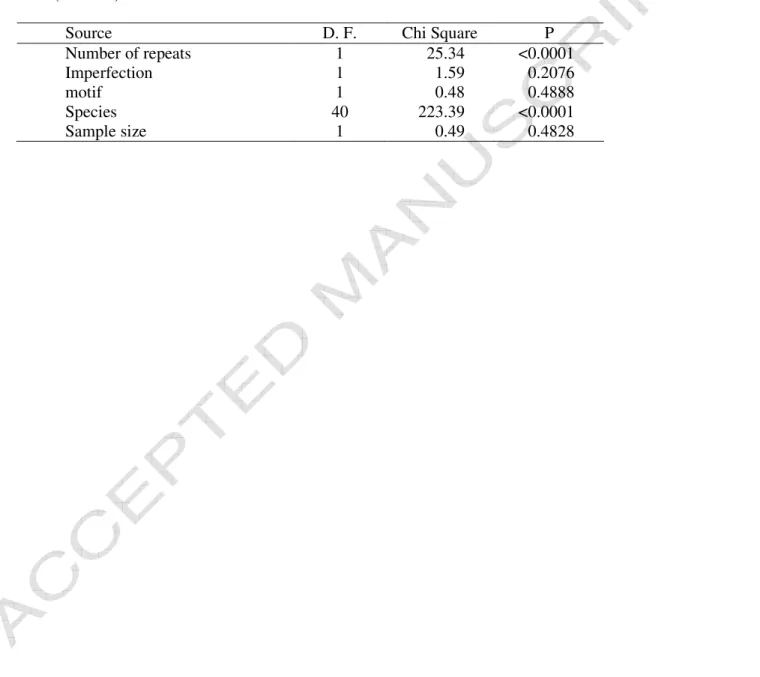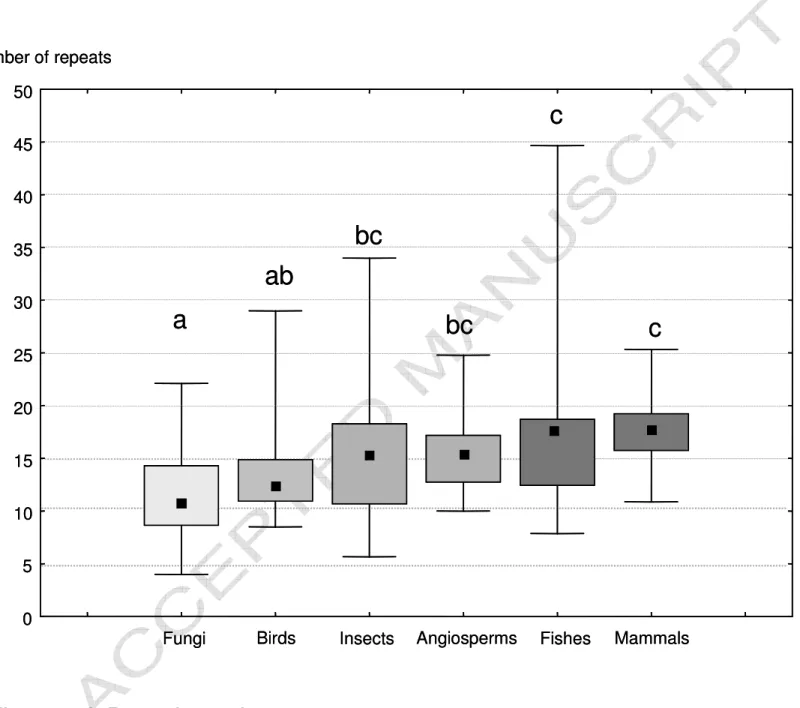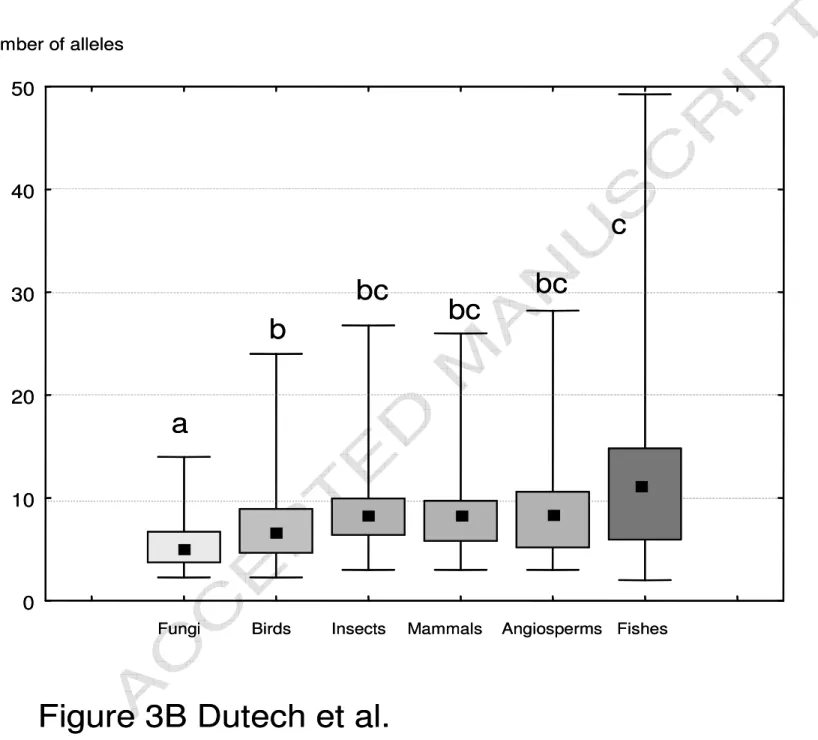Challenges of microsatellite isolation in fungi
Texte intégral
Figure




Documents relatifs
Journal of Insect Science | www.insectscience.org 1 Isolation of microsatellite markers in the Calliptamus genusE.
The greater number of quail markers that amplified chicken DNA as opposed to guinea fowl DNA, and the higher similarity of the quail-chicken flanking sequences compared to
Also, as the cross-species amplification tests revealed PCR fragments of expected size also for the other species analyzed we are confident that, with few exceptions (Table II ),
The table provides multiplex and locus names, primer sequences, repeat motif and number, allelic size range (in base pairs), number of alleles (n a ), observed and expected
singularis microsatellite primers used in this study amplified in either of the other two mirid species, which suggests that the primers designed for S.. singularis
2018 Cross-species amplification of microsatellite loci developed for Digitaria exilis Stapf in related Digitaria species.. Journal of Applied Biosciences 129:
Table 1 Attributes of the Campoletis sonorensis and Chelonus insularis microsatellite loci: N indicates the number of females scored for each species, N a the number of alleles, and
We identified nine polymorphic microsatellite loci in order to characterize the genetic structure of populations at different elevations close to the treeline.. The microsatellite
